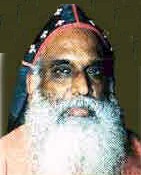 |
| FEBRUARY 2006 | DEVOTIONAL MESSAGE |
|
||
|
TWENTIETH CENTURY: 'THE CENTURY OF ECUMENISM' |
|
|
[The ‘Ecumenical Movement’ is the effort, under God, to bring the whole Christian world visibly and convincingly into one community, one Church. The ecumenical movement understands the unity of the church as a gift from God that we seek to manifest more fully and faithfully, not as something we humanly create. Though good in itself, interchurch cooperation is not the goal of the movement, which is oriented toward a renewed life as church. It brings together unity and justice, calling the churches to greater unity in matters of faith and order and to new insight and action in matters of justice. It is not about reconciling diversities but about seeking unity in a multi-vocal expression of the one truth. The plurality of religions and faiths in today’s society is a major challenge and opportunity for Christians and Churches. Ecumenism requires that this challenge be engaged theologically and in practice. We need to create a body in which the fullness of creation is given expression and we see ourselves more fully as an inclusive body of faith—and in which everyone can see themselves as part of that group]
During the dawn of the twentieth century, the world ecumenical leaders were with great hope and expectations. While evaluating the preliminary symptoms of the century, world thinkers predicted that the 20th century would be the age when the Kingdom of God will be established in this world. Even though the expectations were not fulfilled as speculated, The twentieth Century has been called ‘The Century of Ecumenism’, because of the enormous advances in structured Christian unity. However, By comparison with past centuries, the twentieth has produced extremes in ecumenism. The seeds for twentieth-century ecumenism were sown in the late 1800s. During that time there was a growing interest in achieving unity for the alleged purpose of building an earthly utopia. Though its earliest part was a benign continuation of the pax of the 19th century, many doctrinal differences between the Christian traditions have been the subject of numerous dialogs during this age. The 20th century experienced a flowering of ecumenism. Four different strands—the international Christian movement, cooperation in world mission, Life and Work, and Faith and Order—developed in the early decades and, though distinctive in their emphases, later converged to form one ecumenical movement.
During twentieth century many similar thinking churches and missionary activities came together to a common platform. Many like-minded visionaries joined together and expressed their willingness to work together, and it paved the way for an ecumenical movement among various Churches of differing ideologies. With the concept of 'accept which are acceptable and respect which are unacceptable', the ecumenism could go forward to progress in its own way.
Though Ecumenism had many antecedents, the modern movement began with Edinburgh, which in turn led to the World Council of Churches in 1948. Edinburgh 1910 was both the culmination of nineteenth-century missions and the formal beginning of modern ecumenism. The original purpose of Edinburgh was to promote a spirit of collaboration in order to evangelize the pagan world, while playing down all doctrinal differences. Protestant denominations and missionary societies from around the world sent 1,200 representatives to Edinburgh, Scotland. John R. Mott, American Methodist and leader of the Student Volunteer Movement for foreign missions, was conference chair. Looking to the future, conferees worked on strategies for worldwide evangelism and cooperation.
At Tambaram [India] in 1938 the International Missionary Council [IMC], which established at London in 1921, expressed interest in the World Council of Churches [WCC] plan but decided to continue as a separate body. A number of missionary societies in its constituency did not want to come under the control of the churches.
Middle of the century witnessed the landmark event of modern ecumenism. For all enthusiastic ecumenists, this event is considered as an inspired and bold initiative for the ecumenical movement. World Council of Churches (WCC) embarked on its mission during 1948. WCC became the most visible and comprehensive international expression of varied streams of ecumenical life in the 20th century. When the inaugural assembly convened in Amsterdam on 22 August 1948, its 147 churches from 44 countries represented in some way all confessional families within the Christian world, except the Roman Catholic Church. In the 60s the membership of the Orthodox Churches in the World Council of Churches increased to include all of them.
Second Vatican Council [1962-1965] convened by Mar Pope John XXIII marked a new era for ecumenical relations between Roman Catholicism and other Christian churches. More than 2,000 Catholic bishops and theologians attended, producing statements on priesthood, episcopacy, revelation, missions, church relations to non-Christians, and religious freedom. The statement on ecumenism opened the way for dialog with Orthodox, Anglican, and Protestant theologians. Vatican II marked a major change in Roman Catholic response to pluralism and opened St. Peter's Basilica in Rome to add fuel for the growth of ecumenical movement and acceptance of interfaith.
Formation of WCC and Second Vatican Council brought more diversity in ecumenical relations. Bilateral theological dialogues were formed between these and Protestant churches to promote unity. Many differences between the churches were clarified, but issues on which the churches disagreed were highlighted, thus strengthening self-conscious confessional identities. Through meetings and dialogue many churches have come to understand each other and accept each other as brothers and sisters in Christ.
As a result of the ecumenical growth in the twentieth century many movements originated in the local and national level. Formation of Indian National Council of Churches is one of the instances of this. Similar way National councils were formulated in many countries. In addition many ecumenical organizations were formulated on regional basis. In 1957 the first meeting of the Christian Conference of Asia was convened in Indonesia. This conference was a conglomeration 119 distinct churches of four zones in Asia spread over Japan to New Zealand and Pakistan to Philippines. During the current presidium a consortium was formulated for the merging of the Catholic Bishop Conference of Asia and Christian Conference of Asia. By the Grace of God I had the fortune to work as the President of the section Consortium that included the non-Catholic Churches along with an Indian Cardinal of Roman Catholic Church.
In addition to these, many ecumenical forums are doing many charitable activities. Church's Auxiliary for Social Action tirelessly work for the deprived in the society and concentrate as a major leader for the rehabilitation of the people who are the victims of disasters. These activities were out of the new vision originated through the Christian ecumenical spirit of the twentieth century.
If we look back to the history of Maramon Convention, we can recollect many ecumenists and social reformers had given guidance and inspiration through their speeches. The great message given by Dr. Kagawa of Japan, a renewer of society, which invigorate our social responsibilities cannot be forgotten. World famous orator Dr. Stanly Johns was speaker of the Maramon convention for around 50 years. The originator of World Mission, Dr. Paul Rees, YMCA originator, John Abbott, many other world missionaries Stephen Neil, Archbishop of Canterbury, Sadhu Sunder Singh, T. Walkers, Dr. Bob Pierce etc. of different Churches and religions had preached in this convention. We had great experiences in the past of the revivalism and ecumenism.
It is a noticeable fact that vision of ecumenism is now spread out to be a model of various religious believers and even people of various conflicting ideas. United Nations General Secretary Cofi Annan had convened a global summit bringing 1,000 religious leaders to the United Nations. Most of the Indian Churches were also invited to participate. I too had the fortune to attend the summit. The Global Forum helps to create this change by involving spiritual and parliamentary leaders--the two pillars of our communities--in an intensive dialogue on critical survival issues.
|
|
[Extract from Inaugural Address delivered in the ecumenical meeting at Maramon Convention 2005 Original in Malayalam : Translated by Editor Dr. Rajan Mathew Philadelphia, USA] |
| Back | Home | Top | ||||||
|
|
|
[ ECUMENICAL ] [ ORTHODOX ] [ MARTHOMA ] [ JACOBITE ] [ CATHOLIC ] [ CSI ] [ ORGANIZATIONS ] [ NEWS ] [ MALAYALAM ]
|
THE CHRISTIAN LIGHT OF LIFE PUBLISHED ON FIRST DAY OF EVRY MONTH |

